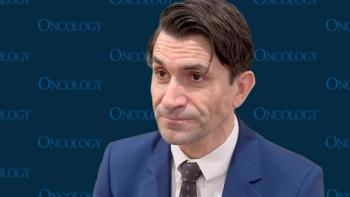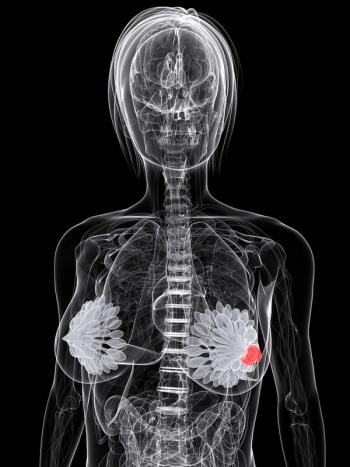
Combination of nab-Paclitaxel, Bevacizumab Eradicates Metastatic Disease in a Preclinical Model
The combination of nab-paclitaxel (Abraxane) and bevacizumab (Avastin) eradicates highly aggressive metastatic breast cancer in a preclinical model, Sophia Ran, PhD, reported at the SABCS (abstract 74).
The combination of nab-paclitaxel (Abraxane) and bevacizumab (Avastin) eradicates highly aggressive metastatic breast cancer in a preclinical model, Sophia Ran, PhD, reported at the SABCS (abstract 74).
Sophia Ran, PhD
Photo Courtesy SABCS/Todd Buchanan 2007
"The rationale of the study was based on tumor responses to chemotherapy," said Dr. Ran, an assistant professor at the Southern Illinois University School of Medicine. Chemotherapy can trigger a stress response in cancer cells, whereby surviving cells produce vascular endothelial growth factor A (VEGF-A), she said. Presence of this factor can, in turn, lead to reactionary angiogenesis and chemoprotection. These associations provide a molecular basis for combining antiangiogenic agents with cytotoxic chemotherapy, she said. The investigators used a mouse model of metastatic human breast cancer called luciferase-tagged MDA-MB-231. Tumors were implanted in the mammary fat pad and allowed to grow to 400 to 600 mm3, at which point the mice also had lymphatic and pulmonary metastases. Groups of six to eight mice each served as saline-treated controls or were treated with bevacizumab alone, nab-paclitaxel alone, or the combination. Treatments were given approximately 18 days and 25 days after tumor implantation. Control mice and mice treated with bevacizumab alone had rapid growth of the primary tumor, with the mean tumor volume reaching 2000 mm3 by about 40 days after implantation. In contrast, mice treated with low-dose nab-paclitaxel alone had initial tumor regression but eventual regrowth, while mice treated with low-dose nab-paclitaxel plus bevacizumab had sustained regression, with four of seven (57%) experiencing a complete response, Dr. Ran said. The difference in volume at 80 days was significant (approximately 2000 mm3 vs about 100 mm3). Mice treated with high-dose nab-paclitaxel alone also had initial tumor regression followed by regrowth (although with a longer delay than in their low-dose counterparts), while mice treated with high-dose nab-paclitaxel plus bevacizumab had a marked and sustained regression, with seven of seven (100%) experiencing a complete response. The difference in volume at 100 days was significant (approximately 2000 mm3 vs 0 mm3). In addition, mice treated with high-dose nab-paclitaxel plus bevacizumab no longer had any visible primary tumor. Moreover, assays for luciferase activity failed to detect any residual breast cancer cells in the mammary fat pad, the lymph nodes, and the lungs of these mice. "We have not seen any serious toxicity in the mice with the combined treatment," Dr. Ran said. She cautioned, however, that the main measure of toxicity was body weight. The mice did not gain any weight during treatment, but resumed weight gain thereafter, she said. "One can counteract this [reactionary angiogenesis and chemoprotection] by using the combination of Abraxane and Avastin, which seems to act synergistically to eradicate large primary tumors as well as lymphatic and pulmonary metastases in this very aggressive model of human breast cancer," Dr. Ran said. She noted that the combination is being tested clinically. "I have seen preliminary data, which looks extremely encouraging," she said.
Disclosures:
The author(s) have no significant financial interest or other relationship with the manufacturers of any products or providers of any service mentioned in this article.
Newsletter
Stay up to date on recent advances in the multidisciplinary approach to cancer.

















































































